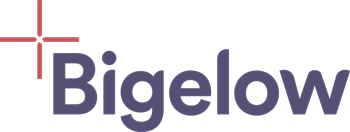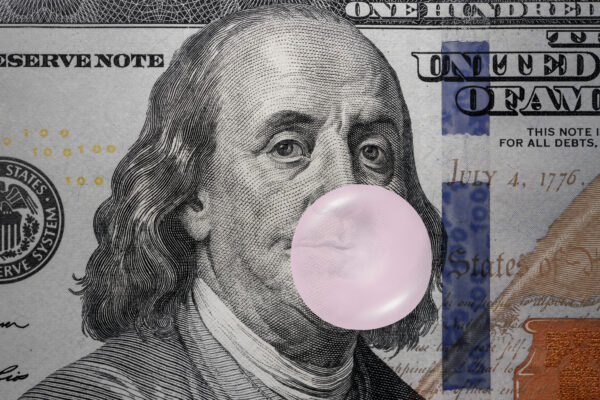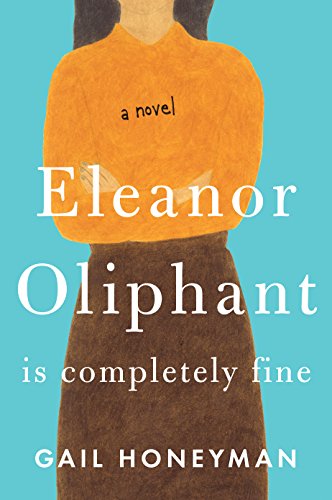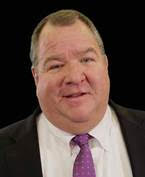3 minute read
North Haven
In the world of uncertainty today, where most employees or bureaucrats face the future gloomily or with suspicion, Entrepreneur Owner-Managers (EOMs) are a different animal aren’t they? Hell, we are a different species of animal.
Some look at housing prices, stock prices, and fear that we are in a Bubble, and the catastrophizers say a recession is upon us.
Yet, investment bubbles have a precise definition. They are historical cases where the prices of assets, such as stocks, homes, commercial real estate, or commodities, rise to unsustainable levels driven by speculative zeal, only to crash dramatically afterward. In effect, the price of the asset is inflated higher than the asset’s intrinsic value.
What are a few of the best-known investment bubbles in history?
Tulip Mania Bubble (1636-1637): Probably the earliest recorded investment bubble, Tulip Mania occurred in the Dutch Republic (Netherlands). Tulip bulbs became incredibly valuable, with prices soaring to astronomical levels. While there are few accurate records from that time, we do know the bubble burst abruptly, leading to a significant economic downturn and the loss of fortunes.
South Sea Bubble (1720): Did you know the South Sea Company was originally formed to manage the British national debt? Enthusiasm for its founding saw its stock price rise dramatically as investors speculated on the potential for huge profits from trade with the Spanish colonies. When reality fell short of expectations, the bubble burst, causing massive financial losses. It’s documented that even intellects like Sir Isaac Newton and the author Daniel Defoe lost fortunes in South Sea Company stock. Which inspires an interesting question: does being “smarter” protect you from bubbles?
The Roaring Twenties and the Great Depression (1920s-1930s): In the 1920s, stock prices in the United States soared in what is known as the Roaring Twenties. The market crashed in 1929, and lost 25% of its value. Okay, not good. But after the initial crash, the stock market experienced a partial recovery in the early 1930s. The recovery proved to be short-lived, as the Great Depression deepened and economic conditions worsened. Despite episodic ups and downs, believe it or not, the stock market continued to decline overall during the 1930s and early 1940s. The impact of the Depression, along with various economic challenges and Federal Government errors of commission and omission, hindered a swift recovery. The stock market finally saw a sustained recovery during and after World War II. The wartime economy and post-war reconstruction efforts contributed to economic growth, and stock prices gradually increased. Get this: It took until November 23, 1954, more than 25 years after the 1929 crash, for the Dow Jones Industrial Average to finally exceed its peak from before the crash in 1929.
Dot-Com Bubble (late 1990s-early 2000s): During the rise of the internet (Bigelow plugged in, in 1996), many companies with little or no profit potential saw their stock prices skyrocket. Hundreds and hundreds of young start-up or emerging companies with a good idea—but no sustainable business—were funded. The bubble burst in the early 2000s when investors realized that many of these companies were overvalued, leading to…what else, significant market declines. Some of those young businesses were able to survive by pivoting their business plan or reducing spending. Most who needed continuous financing ran out of cash and disappeared, or reluctantly had to accept more cash at a lower (in many cases MUCH lower) valuation than the last round. The S&P crashed an incredible 75%. Remember pets.com, toys.com or webvan.com? (Me neither).
Housing Bubble and Sub Prime Mortgage Crash (mid-2000s): The housing bubble saw home prices rise rapidly due to risky lending practices and speculation. When housing prices began to decline, it triggered a financial crisis in 2008, affecting global markets and leading to the so-called Great Recession.
All investment bubbles share common elements, such as speculative behavior, unrealistic valuations, and an enthusiastic disconnect between asset prices and their underlying fundamentals (it’s different this time). So, are we in a Bubble now?
Hell yes—we are. But the bubble isn’t in private industry, technology, or in overall stock prices. It’s in shhh…educators hate this…it’s in higher education.
Higher Education Bubble. From 1981-82 to 2021-22, the cost of attending a four-year college in the U.S. ballooned from $11,840 a year to $30,031 a year—representing a 153 percent increase in the last 40 years. That cost includes tuition, room, and board. So, college costs have increased about 330% more than inflation.
Why?
Are there 3.3 times as many teachers? Nope. 3.3 times more learning? Nope. 3.3 times as many courses of study? Nope. More productivity (measured on any basis)? Nope.
But here’s what there is:
Bloated Administrative Costs: Colleges and universities have seen increases in administrative expenses, including salaries and creative compensation for leadership, administrative staff, compliance with regulations, and investments in technology for administrative functions. Campuses are drenched with the costs of empire building.
Corruption of Faculty and Staff Compensation and Benefits: Faculty and staff salaries and benefits, including healthcare, retirement contributions for tenured faculty often defined benefit plans (lifetime employment no retirement age), tuition remission (where the institutions pay for faculty children to go to school at no cost), frequent sabbaticals, fewer and fewer courses required to teach, contribute to rising costs. Many institutions are struggling with how to separate from older unproductive faculty, and have been unable to downsize appropriately due to entrenched tenure rules.
Unnecessary Amenities and Facilities: The competition among these not-for-profit entities for improved campus facilities, residence halls, state-of-the-art technology, and recreational amenities has driven up costs. Institutions invest in these features to attract students and parents and compete against other schools. But typically, they are not investments that result in more revenue. So, Colleges and Universities went on a spending spree without regard to who is paying the bills—parents and Uncle Sam (in the form of federally guaranteed student loans which now total to $28,000 per graduating college student on average).
Lemme ask you a question: if you are paying for higher education costs, do you want these mostly not for profit institutions (meaning they do not pay taxes) investing in water parks, ball fields, and generally expanding their not-for-profit empire without regard to costs?
Colleges and Universities act as a monopoly where they conceal the true costs of higher education and who benefits. Why don’t they candidly disclose completion rates, average incomes by degrees received, and average student debt? Do you know the average graduation rate for all students that begin higher ed degrees? (1)
Of course, we don’t. These institutions are an artifact of the pre-knowledge society where easy money from the federal government and other historical anomalies encouraged undisciplined spending by Administrators with no skin in the game.
Look, any time you separate the “final consumer” from the “payer” bad things happen, right? Consumers are really smart. We don’t have to listen to what they say, we just have to watch their behavior to understand them (revealed preference). If the consumer is also responsible for the financial payer, then the consumer shops around and chooses the items off the menu that she deems have most utility for her. If you separate the consumer from the payer, usually costs go wildly out of control as there are no consequences. Think: federal financial aid. Think: sick care insurance.
The cost of higher ed has gone up and up and up and up, but the value of the degree measured by any coldly object way? Not so much. Prices have been bid up just like in any bubble, and the intrinsic value just isn’t there. Enabling behavior with no consequences as it has been encouraged by the bureaucrats in higher education (and the sick care system!) is unsustainable. The higher ed bubble is just...about...to burst...all around us—and not a moment too soon.
(1) The average graduation rate for all schools is 60% in six years. Note that these are four-year schools, but they’ve bent the stats to measure completion rates over six years instead of four years. My WAG would be that 45% or so graduate when measured over 4 years. What other profession would you say has a 40% failure rate? Meaning the students matriculated, most presumably took on financial aid loans to do so, and now they still have to pay those loans back even though they don’t have the degree to show for it?
Note: Pete has been a member of the Governing Boards of four institutions of higher education over the past thirty years.
What I am Reading / Listening to
Eleanor Oliphant Is Completely Fine (2017)
By Gail Honeyman
Contributed by Mari Lister
Eleanor Oliphant Is Completely Fine is the debut novel by Gail Honeyman, a Scottish bestselling author. Eleanor Oliphant, the works titular character, is a socially awkward and isolated woman in her 30s living a rigid and solitary life in Glasgow. The story unfolds as Eleanor's structured life begins to unravel through an unexpected friendship with Raymond, a coworker, and her infatuation with a local musician.
Honeyman's writing is both witty and heartwarming, and she skillfully navigates the delicate balance between humor and profound emotional depth. I think the character development in the novel is exceptional. Eleanor is a complex and endearing protagonist, and readers will find themselves rooting for her as she embarks on a journey of self-discovery and healing. As the layers of Eleanor's past are peeled away, the story explores themes of mental health, trauma, and the power of human connection.
While the novel deals with heavy themes, it also offers plenty of moments of humor and levity, making it a balanced and enjoyable read. Honeyman's skillful storytelling kept me engaged from start to finish, and the plot unfolds in a way that kept me guessing until the very end.
I found Eleanor Oliphant Is Completely Fine to be a beautifully written, emotionally resonant novel that explores the complexities of human relationships and the healing power of friendship and self-acceptance. This book is a must-read for anyone looking for a compelling and heartwarming story that leaves a lasting impression.
Entrepreneur Owner-Manager Quote
"Having failed at managing a transaction ourselves, we had no idea what an M+A advisor could do. Bigelow kept us in control and got it closed. We got to choose our partner and the valuation was more than 50% higher than our prior deal that didn’t close. In a word…TREMENDOUS.”
-Duane Dunn, President of Dunn Industries, Inc.
© 2024 Bigelow LLC. All rights reserved.



